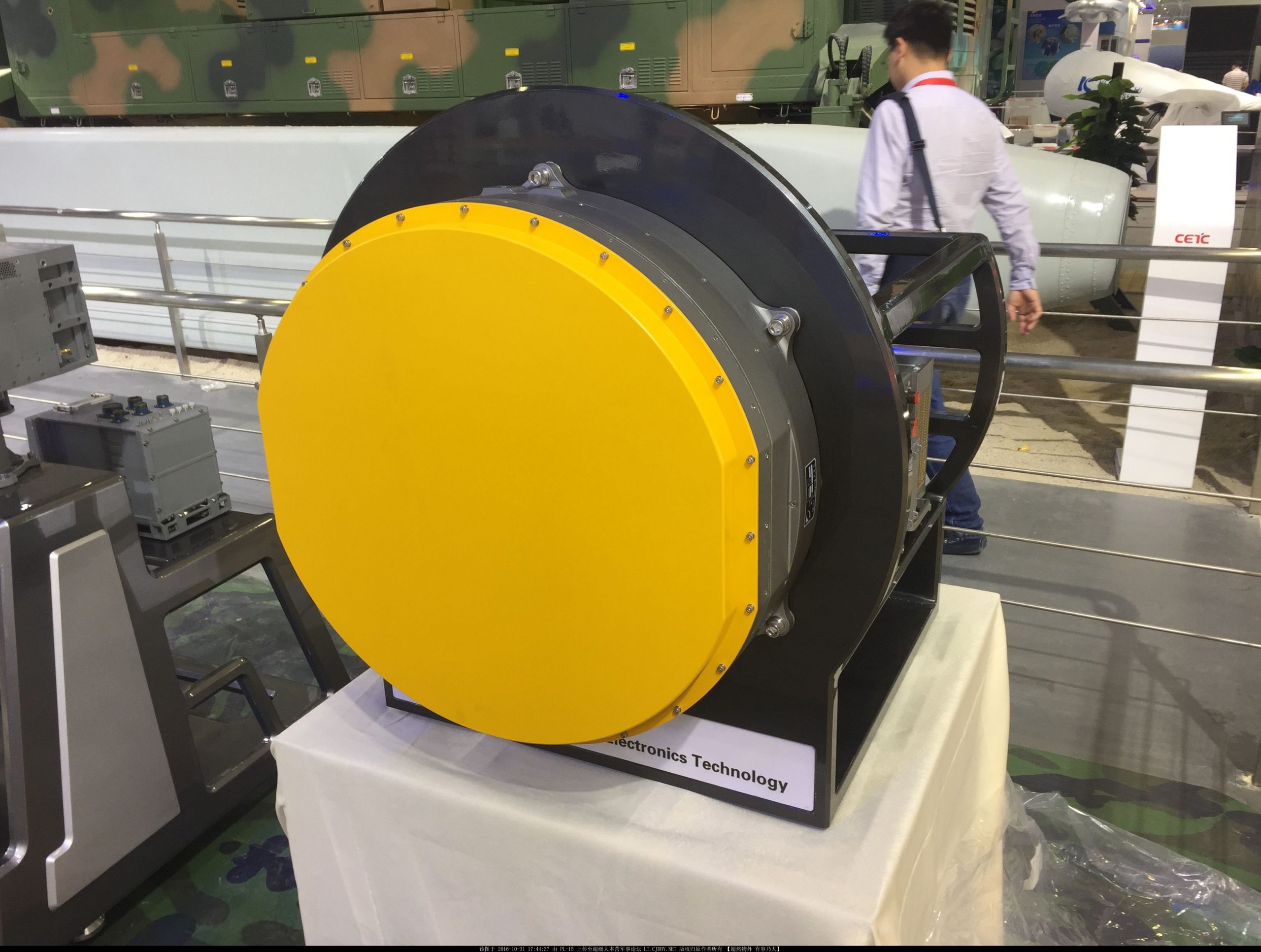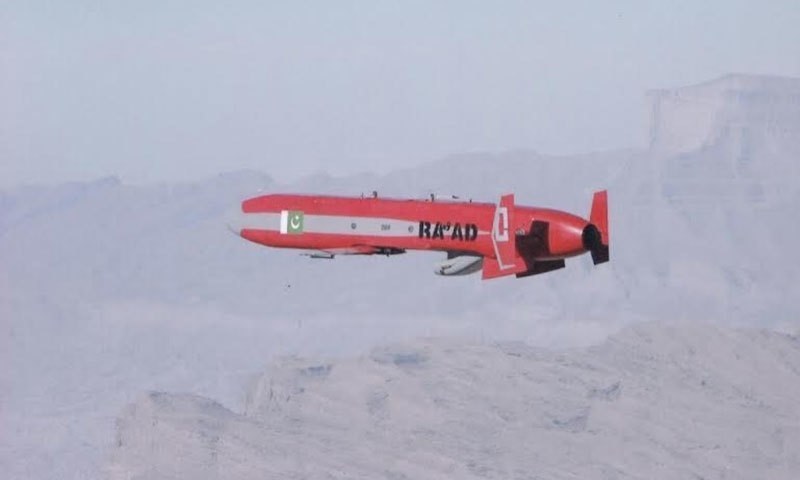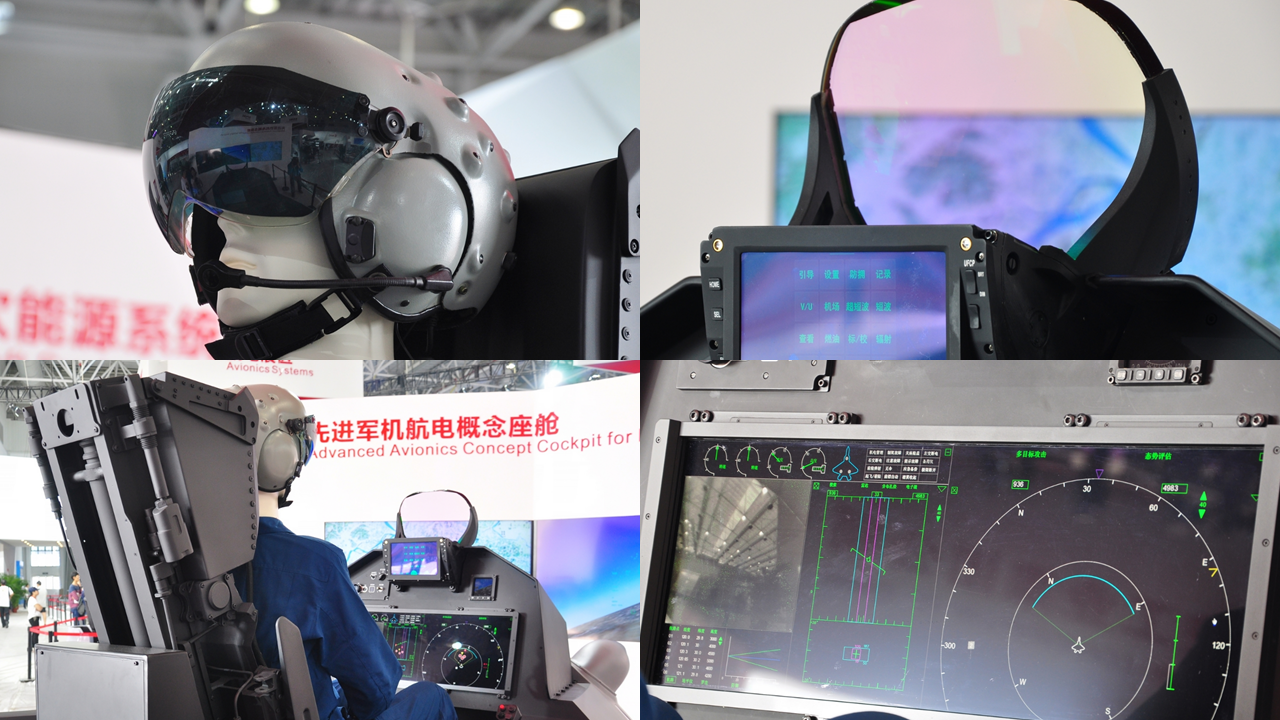2526Views 29Comments

Pakistan aims to domestically produce AESA radars
In his speech celebrating Pakistan Aeronautical Complex’s (PAC) achievement of overhauling its 1,000th aircraft, the Pakistan Air Force’s (PAF) Chief of Air Staff (CAS) Air Chief Marshal (ACM) Sohail Aman stated that PAC’s future lies in the development of active electronically-scanned array (AESA) radars.
Designed to overcome the electronic warfare (EW) and electronic countermeasures (ECM) weaknesses of legacy pulse-Doppler radars, AESA radars have effectively become the standard for modern air, land and naval applications. Functionally, AESA radars utilize many individual transmit/receive – or transceiver – modules (TRM), each emitting its own radio signal as though (in simple terms) it is a mini-radar.
Thus, an AESA radar system is transmits in different signals, which makes it difficult for EW/ECM systems, such as digital radio frequency memory (DRFM)-based jammers. DRFM jammers operate by singling out an opposing radar’s radio waves, and then re-transmitting in the same signal. In turn, the radar would be at risk of jamming. However, because AESA radars transmit in many different signals, and change those signals with each pulse, jamming is more difficult.
The PAF is intending to configure the forthcoming JF-17 Block-III with an AESA radar, which it is expected to select in May (Aviation Week). The leading candidates are the Nanjing Research Institute of Electronics Technology (NRIET) KLJ-7A and Leonardo Vixen 1000E. It is unclear if transfer-of-technology for licensed local production is on the table for either option, but PAC’s Avionics Production Factory does list the KLJ-7 and Grifo-7 among the systems it produces, though the extent is not known.
While one can expect licensed manufacturing of AESA radar components for the JF-17, the PAF could also direct PAC towards the more ambitious – and commensurately rewarding – route of becoming Pakistan’s main radar vendor. In other words, turnkey domestic AESA radar manufacturing, which would provide the armed forces with substantially greater freedom (to configure their weapon systems) and, over the long-term, provide cost-savings by reducing imports (and increasing work for the local industry).
In fact, one of the underlying pieces of an AESA radar – i.e. the active phased-array TRM – can be applied to EW/ECM and other sensor solutions, such as synthetic aperture radars (SAR) for ground-mapping. PAC mastering this technology would enable to undertake a significant amount of development work, not just for the PAF, but the Pakistan Army and Pakistan Navy as well. In terms of applications, PAC could produce modern EW/ECM suites, SAR and AESA radars, and solutions for onboard fighter aircraft, special mission aircraft, drones, naval warships, and land-based integrated air defence systems.
The potential benefits are significant, but the methods available to Pakistan for undertaking the effort of possessing its own AESA radar technology are another matter. The armed forces will need to invest in the country’s organic research and development (R&D) base to build the requisite technical competency, especially in terms of human resources and industry infrastructure. Even in the best-case scenario of collaborating with a technology partner in China and/or Turkey, Pakistan will need to have to contribute to the overall effort, lest it be just a recipient. In such cases, it may be difficult to open collaborative routes. The Transfer-of-technology route would also be capital-heavy, and it too would require building domestic skills and infrastructure (to absorb the technology). Organic R&D investment is essential. Kamra Aviation City, which is due to start post-graduate programs in April 2017, would be a means to execute on this necessity (for AESA radars as well as the next-generation fighter program).
To his credit, ACM Sohail Aman has maintained a consistent stand in that he has been openly assertive of indigenization, stating that supply-side independence is the core objective of the PAF’s current roadmap – Vision 2030. Given the applicability of AESA radar technology for land and sea applications, one would hope that support for this initiative would also come from the Pakistan Army and Pakistan Navy. With the country’s fiscal limitations, tri-services collaboration would certainly help, especially for forming the basic R&D foundations to enable serious development.



29 Comments
by Syed Arbab Shah
Though the true extent of TOT is not known, I just hope KLJ 7A has GaN technology in it.
by amar
Hi bilal!
Pakistan does have a local assembler in the form of PAC,but are there any dedicated research labs specializing in radars?Kindly shed some light.
by Khalid Riaz
You are right on the mark in highlighting the need for organic R&D. However, the effort need not be limited to the Aviation City. It should have a broader participation from top universities in Pakistan. These technologies have great potential for commercial spin-offs. The real cost effectiveness (from a national perspective) would come if the effort is more widely shared.
The Pakistani universities have come quite a long way from where they started amost two decades ago. Just to provide some context, Thomson-Reuters recently produced a special report on Pakistani university research. A key finding of the report was that Pakistani university based researchers produced more “highly cited” papers than those in the BRIC economies.
While this is a very welcome milestone, there is more going on here than meets the eye. Pakistani academics are targeting citations. They do this by working on problems that are of interest to wider audiences mostly in other countries. They are eschewing dealing with problems of interest to their own economy.
This is a form of brain-drain that has become prevalent because of perverse incentives that provide rewards on the basis of inappropriate metrics. If organic R&D is to be driven partly by defense expenditures then universities have to be involved in it to maximize the possibilities of technological spillovers to domestic industry.
Pakistan’s defense technology development initiatives have remained under the security blanket for long. And this was for understandable reasons such as the nuclear program or the missile program where MTCR considerations kick in. But with the aircraft and air-defence technilogies, there are no such compulsions. So these technology development efforts should also co-opt the universities. The top tier universities are at a stage where they could begin to deliver.
by KuCe
KLJ-7 has reportedly 400km+ detection range. This is comparable to AN/ APG-79 of F-22. If true, Chinese AESA radar may have GaN based T/R antennas; otherwise such dense packing of array modules not possible in limited space of nose-cone. Big question is “Has China mastered GaN based semiconductor technology which has fully evolved in West circa 2008 ?”
by zahilhamid
it has GaS & no one will give you technology… Probably a assembling job like all your other systems
by KuCe
Halo Bilal, why have you withheld my post? Have I violated any forum rules? or just because I am Indian !!!
by TS0101
Industries suppose to grant funding for R&D in universities. Gov should give tax incentives to Uni whosoever allocate funds for R&D on specific sectors.
by Aamir
Any news if an IRST will be incorporated in the JF 17?
by Sami Shahid
Pakistan should really develop EW/ECM suites, SAR and AESA radars. Anyway, today PAC has overhauled its C-130. Its a great achievement !
by Abdul Rashid
Hi KuCe, your previous comment has now been approved. It sometimes takes a little time until an available moderator can read and approve it for posting.
by Bilal Khan
If a post is withheld it’ll come up as deleted. In your case, I was just sleeping (in Canada).
by KuCe
☺No problem friend!
by yas
AESA radar is not an easy job.but if pak hires top class electronics engr. and programmers .i am positive pak has the talent and threshold to make the best radars. Only thing we need is to hire ppl on merit .Recruit the best. Look at there final projects which they delivered to universities in there final year.
by MT
Pakistan has never produced any kind of radar in last 70yrs as it has barely invested in electronics, avionics .
So before planning about producing AESA-GaA T-/R it should make some pulse doppler, PESA radars atleast some of native one’s are being manufactured in Western universities.
For now, pakistan can think about CKD,SKD assembly of chinese systems.
by ahmria
Baby steps but this is the right way to go. Pakistan needs to develop R&D in these emerging technologies if it wishes to be truly self reliant.
by ahmria
I’m pretty sure that there was talk about an IRST system being integrated into the JF17 block 3.
by ahmria
Well that is the beauty of learning and developing an indigenous AESA radar as the tech when it is fully matured can further be used in EW/ECM and ECCM suites. Long term as the article states the development of AESA technology will also be of huge benefit to the army and navy and lead to much more capable missile and area defence.
by nob hamid gul
Love the quality of content you people write.
by nob hamid gul
It is always so good to see your comment.
Pakistan has done nothing in the last 70 years.
by Zill e Hussnain
that might help to bust ur bubble, http://www.pac.org.pk/avionic
by ABU JEHAL
Your comments are par for the course ……..aiming high is left for the pakistanis
by KuCe
When you see Universities in North America and Europe filing large number of process patents every year, you realise why South Asia failed in core engineering. Most of us are happy assembling something with off-the-shelf components available in international market.
Gallium Nitride is a semiconductor that has not only use in TR antenna of radars but also LED panels and others. Will Pakistan or for that matter India will be able to set up a foundry for GaN chips any time in distant future? So, at best we will be assembling AESA radars under license from big players. China on the other hand has a mature electronic components industry.
by amar
Hi MT! You’re partially correct,as in,Pakistan indeed has been “assembling” chinese or italian origin avionics and radars for decades now as Mr Zill e Hussnain has pointed out. The issue here is,I am sure Bilal too would agree,lack of any solid R&D activity in pakistan.This has again something to do with entire R&D culture of pakistan. Over here in India we have got HAL that filed close to 700-800 patents annually thereby increasing their patent footprint year on year.Whereas Pakistan is no where close to India in patent race or creation of intellectual property or industrial designs.
What ACM Sohail Amman wanted to highlight in his lecture was that pakistan needs to take up production of AESA radars etc–of course an indigenously designed AESA is still WAY OUT OF THE REACH for pakistani industry at the moment,yet they can perhaps “co-produce” a chinese AESA(like the KLJ-7A).I think ACM Sohail Amman is more concerned with the strides India made in the field of AESA radars and host of AESA radars “designed” by LRDE bangalore.He perhaps wants to “simulate” something on the lines of LRDE in Pakistan!
by Khalid Riaz
Agree with you mostly. At present, the situation is indeed the way you have described. And there are good reasons for it.
The defense related research and production in the country takes place in the public sector. So it neither benefits from the expertise available in the academia nor from the private sector investment. As a result the commercial spin-offs do not exist, and the product costs are high because of the characteristic inefficiency of the public sector.
Moreover, the universities are not tasked with solving the national problems. The academics are seeking citations and quick publication rates. I know a prolific Pakistani academician who produced five highly cited papers. Almost in all of these papers he researched the problems of other countries including India.
There have been some rare examples where defense technologies generated commercial spinoffs. These achievements have been demphasized in our national discourse, and as a result most Pakistanis have little knowledge of the mamoth impact they had on the country. So let me give one such forgotten example.
The Nuclear Institute of Agriculture and Biology (NIAB) can be thought of as a spillover from the quest for nuclear technology. It represented the peaceful use of nuclear technology, which has been important to Pakistan in many ways. The Institute focused among other things on developing new varieties of crops. One cotton variety they developed was NIAB-78.
After the severe drought of 1983 where NIAB-78 proved its survivability, the high yielding variety was adopted widely. As a result the cotton production of Pakistan rose sharply. In 1987 it touched to 9.5 million tons. And in that year, Pakistan replaced the United States as the largest exporter of cotton in the world!
Today, the cotton production has fallen below the level achieved 30 years ago. Is it too much to ask a couple of good universities to solve this problem?
The universities have simply not been tasked to focus on national problems. Otherwise the incentives they face could not have been what they are. The point of my example is that the scientific community in this country can deliver if called upon to do so.
It is my view that with the defence expenditure trajectory that Pakistan is locked into, maximizing commercial spinoffs is the a way if achieving cost effectiveness.
by Khalid Riaz
Agreed. But lets also agree to not go on a tangent and discuss NARC although I am very familiar with its evolution. This is not an appropriate forum for that I feel.
My point is that we spend huge amounts of money on defense including R&D, and we also spend substantial and growing amounts on universities and research institutions. I expect that we would stay locked into those expenditure patterns. So there is a need for building synergies between the two. I believe the payoff will be handsome.
by Sami Shahid
We should also focus on developing Air Defense System locally
by Zill e Hussnain
i need to correct u here, there is a difference between “Assembling” and “Licence built”, Pakistan is licencing building these radars from a long time, a lot of components for these radars are manufactured by PAC, PAC has mastered in repair and maintenance of both Grifo and KJL-7 V1 and V2, Pakistan has the experience of 22 years with Grifo and 10 years with KJL-7s, these radars have been placed in around 400 operational and battle ready fighter jets of Pakistan air force, since you have brought up the comparison, would you be kind enough to tell us which made in India radar is placed in any operational air craft of Indian Air force? Russians did not share a dime of their PESA of Su-30, the Migs, the Jaguars and Mirage, none of them have a single component in terms of radar which is produced by India, India tried to develop a radar for Tajes which failed and ultimately u had to get help from israelis, despite F-16 a great platform, India is seriously interested in Gripen as Saab has offered to share the radar technology and fix all problems with tejas, among all these 700 patents every year(i know the figure is highly exaggerated), is there one single patent for any radar component which is installed in a single operational air craft of Indian air force? What ACM Sohail Amman wanted to say that Pakistan needs to develop an AESA radar(not assembled nor licence produce) and he also did not discard the cooperation with any other country like China, Turkey or Italy for development. At this moment, Pakistan is developing their side of academia on the grass root level, Pakistan will have their own AESA before 2023
by amar
This is the kind of reply you give when you’re either ignorant or deliberately choose to not read up on indian developments-
here is a link about number of patents,do go through it(this figure is 2 years old and the number has certainly increased since then)
http://www.financialexpress.com/industry/we-filed-773-patents-this-year-against-two-in-2012-rk-tyagi-hal/35711/
Talking about radars,airborne fighter radars are NOT the only radar–ground based surveillence and fire control radar are also radars,Similarly AWACS radar is also radar.
As for patents pertaining to Indian AESA radar research efforts,again do read more–India is far more transparent than pakistan when it comes to research.
http://www.newwarfare.com/index.php?task=cover_story&&id=149
by amar
These are the AESA radars designed by India,Google is your friend,You can verify-
1)L-start project
2)Arudhra project(Not the israeli radar of the same name,but an entirely indigenous 4D AESA radar with DBF)
3)Ashwin radar
4)Uttam AESA radar for LCA(although it is still not as capable as the IAF wants and hence it will take some more time before it matures)
5)Ashlesha radar.
Kindly note the T/R modules for all of them have been patented by LRDE bangalore.Again,in case you’re in doubt you’re free to google!As for pakistan designing their own AESA radars–you are free to dream whatever suits you–but reality is QUITE DIFFERENT!